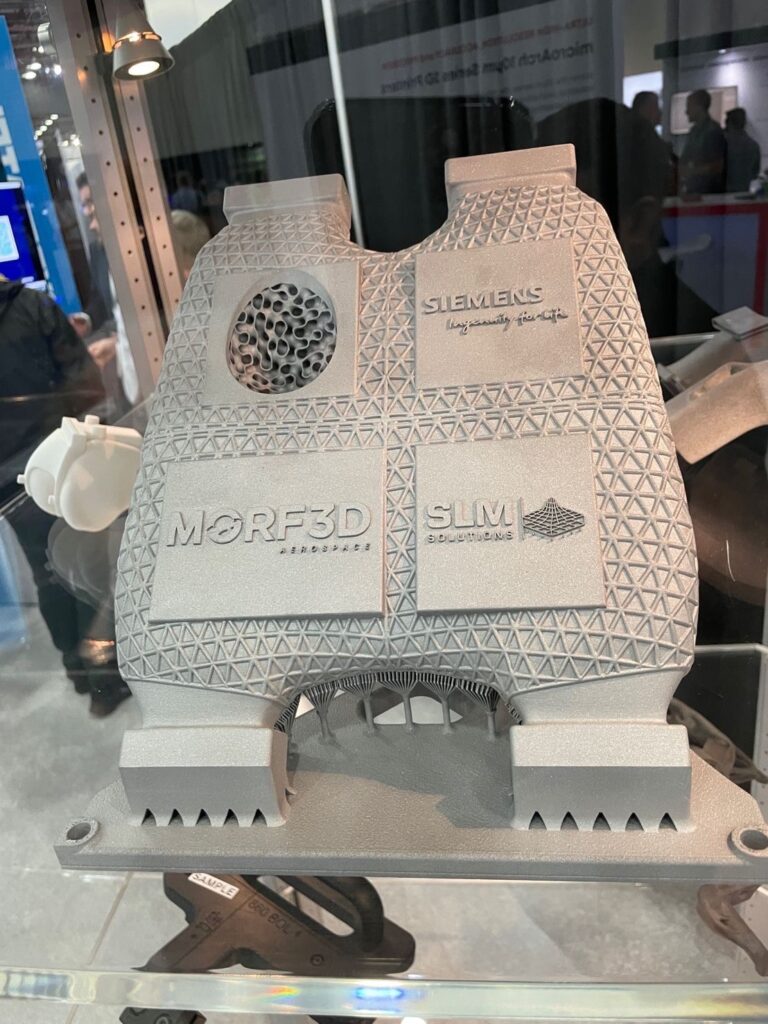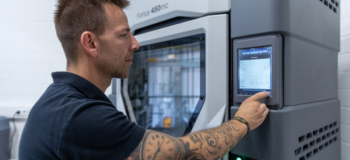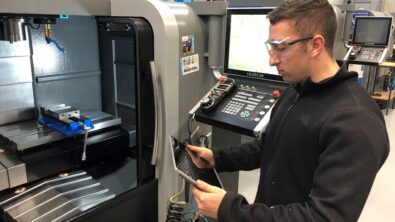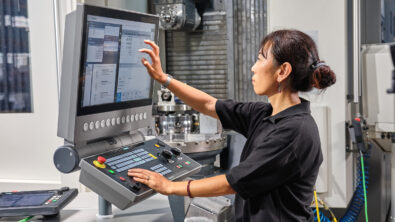Siemens Software at Rapid + TCT 2022 – Three Key Takeaways About Cloud Manufacturing

The importance of digital workflows in additive manufacturing – and how small- to medium- sized businesses are eager to digitize their manufacturing process.

There was excitement and chatter among the crowds of industry experts at the RAPID + TCT show, held May 17-19, 2022, at Huntington Place in Detroit, Michigan. For more than 30 years, RAPID + TCT is known worldwide as North America’s most influential and largest additive manufacturing event. Siemens Digital Industries Software exhibited at RAPID + TCT alongside over 100 industry leaders. From 3D-technologies, insightful keynotes, groundbreaking product announcements, hands-on exhibits, it was an opportunity to learn of real-world additive manufacturing solutions from the industry’s most respected experts.
Although the event focused on real-world solutions for additive manufacturing, it is clear that both additive and subtractive manufacturing businesses coexist and complement each other. Despite the production and operational differences of additive versus subtractive manufacturing, the same key principles apply for what it takes to run a successful business: manage production efficiently, improve visibility in real-time, and boost profitability.
While exploring the expansive conference hall, we spoke to several exhibitors that attended the conference, including small- to medium- sized 3D print service bureaus and part suppliers. Meaningful connections were made as we continued to learn more about the common challenges that part manufacturers face as they navigate their business in an ever-changing technological world. Manufacturer business owners expressed interest in modernizing their manufacturing processes to close the loop between the virtual and real worlds of production, such as investing in job shop software and shifting toward paperless manufacturing.
There were three identifiable themes among the small- to medium- sized business: manufacturing data management is cumbersome, cloud manufacturing software is on the rise, and smaller businesses need an affordable solution to improve their digital workflows. Among the manufacturers we talked to, there was a strong consensus that modern solutions would address their business challenges to increase the efficiency, quality, and profitability of their business. To expand upon the common themes, these were our key learnings and potential solutions.
Manufacturing Data Management
Challenge: Excel files. Several of them. A 3D service bureau owner shared their growing impatience with the number of large excel files that need to be managed, as well as issues with accessibility and disorganization of the job data. Another business owner expressed the need for paperless manufacturing as they referenced the lackluster paper trail used to drive their business.
Solution: What’s needed is a solution where all job documentation can be stored safely and be kept up to date instantly, such as manufacturing project management software. A digital solution is required and one that meets the real needs of the business. That’s where digital documentation needs to be supported by digital workflows, such as machine shop software.
Cloud Manufacturing Software
Challenge: Reducing lead time and improving productivity is essential in today’s interconnected business environment. Customers have high demands, and part manufacturers are looking for a way to optimize business processes and reduce overhead administrative activities through cloud manufacturing software.
Solution: Cloud manufacturing can fix the disconnected processes of a shop floor by minimizing the “operational overhead” and eliminating the concerns about installing the latest software version and having to maintain it. For many companies, the cloud is the “light bulb moment,” that modernizes a business easier than expected. Manufacturers can also access the job shop software at any time across all devices including computers, tablets, and smart phones.
The Affordable Solution
Challenge: Small- to medium- sized machine shops do not need to invest in a large manufacturing ERP software to address some of the issues mentioned here. The costly investment of a large manufacturing ERP prevents small- to medium sized businesses from maximizing their profits.
Solution: Small businesses are under pressure to maximize every resource to stay lean and remain competitive. That is why small business manufacturing software should be a comprehensive, affordable, and user-friendly platform that eliminates the paper-based approach and provides powerful business outcomes.

So, how do we create these types of solutions? By tailoring it specifically to the needs of the small- to medium – business environment. That way, manufacturing data management is no longer a problem and cloud manufacturing solutions are achievable and affordable. Key industry learnings like these are what make attending conferences like RAPID + TCT such a valuable experience. We start to connect the dots and drive end-to-end solutions that meet the real needs of the machine shop floor.


